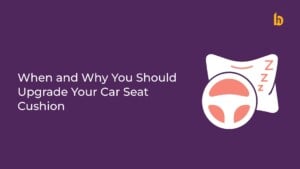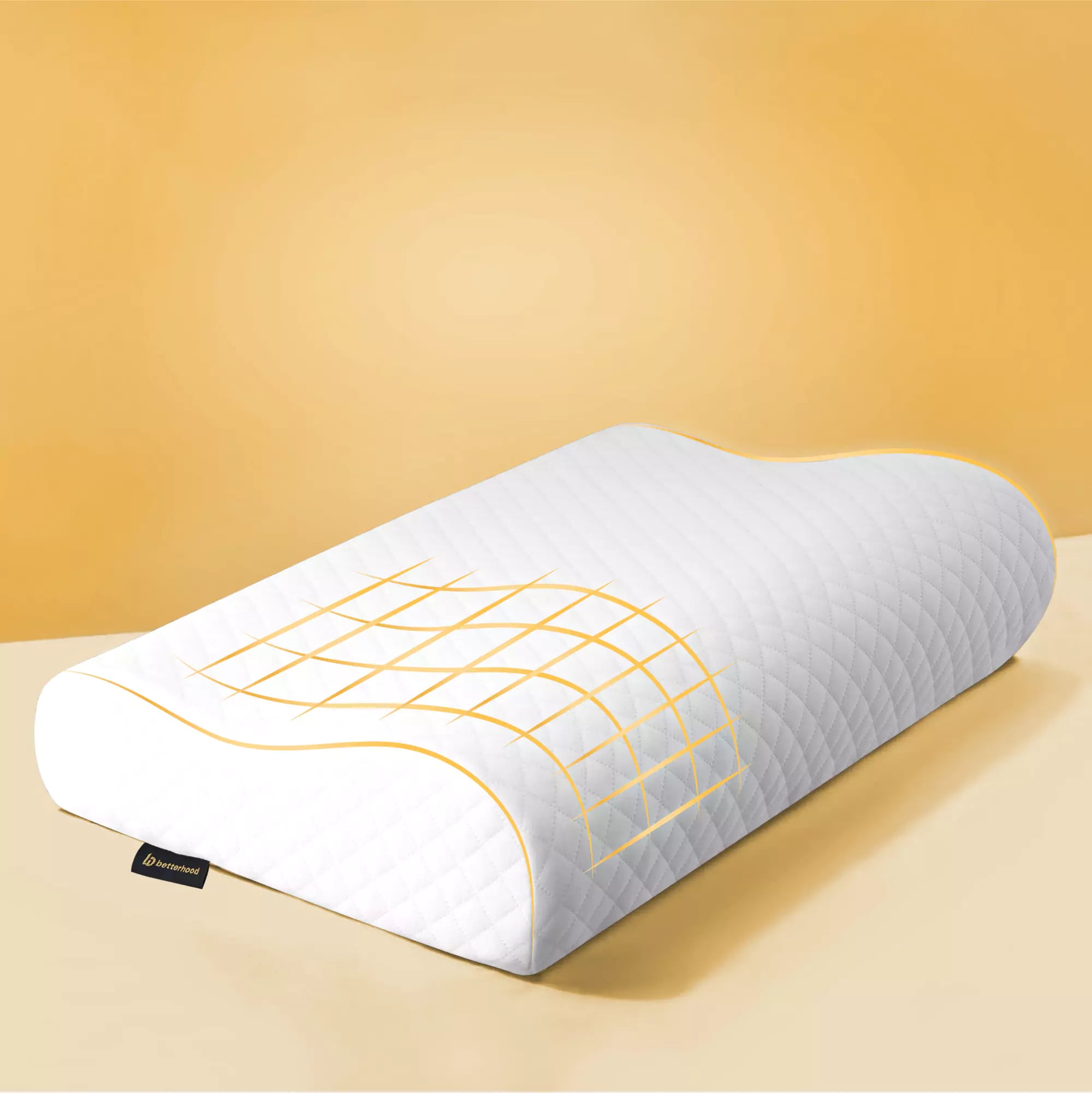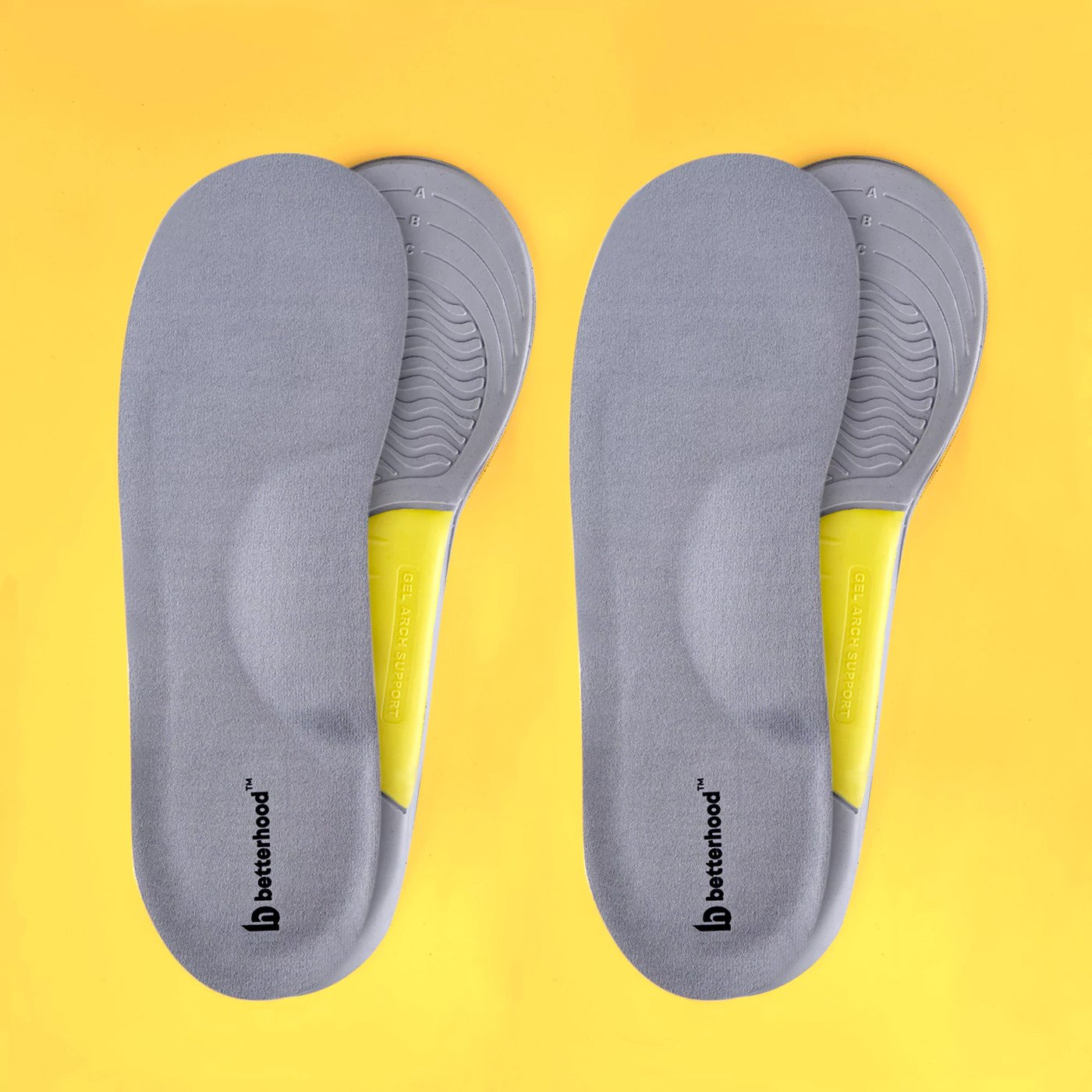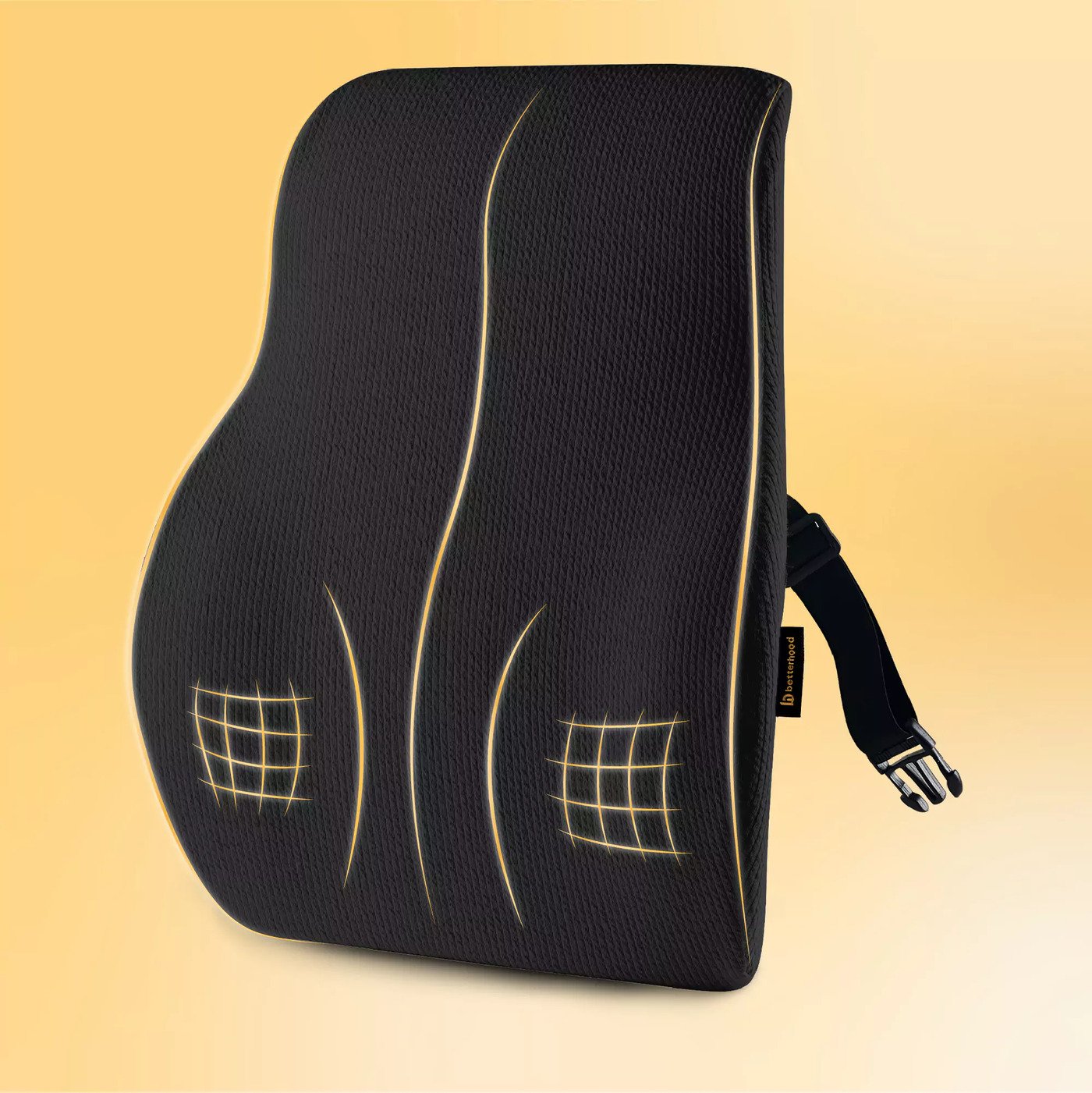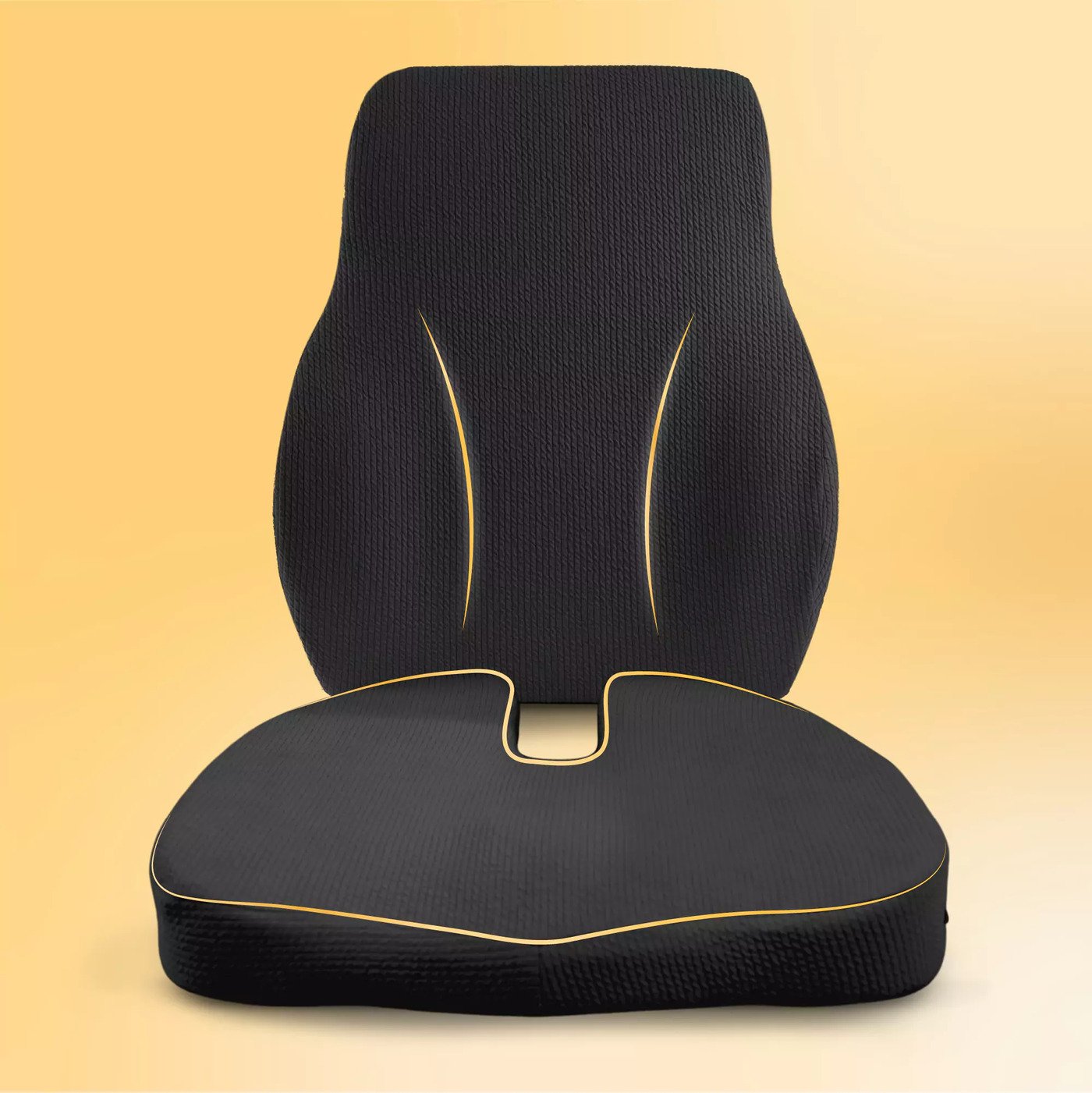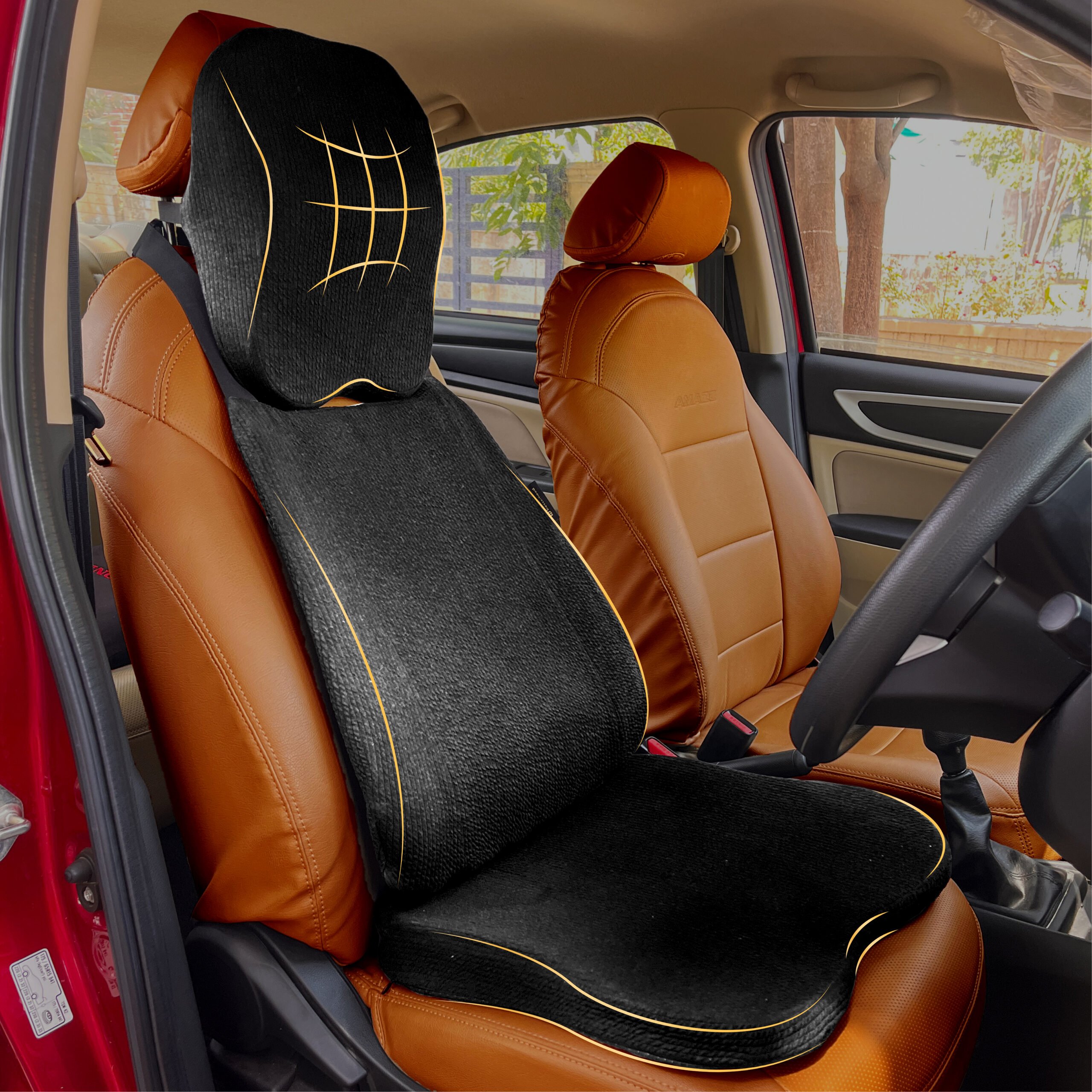Ever stepped out of your car after a long drive and felt that dull ache in your lower back or stiffness in your shoulders? You’re not alone. Most drivers don’t realize how much stress their spine undergoes during routine commutes or road trips. The problem? Standard car seats are rarely designed with long-term back health in mind. They do not provide the ergonomic support necessary to keep one in good posture and spinal alignment. Eventually, this ostensibly tiny problem can result in long-term backaches, nerve inflammation, as well as mobility problems.
Regular driving will not appear to be ill-advised, but in fact, bodies were not designed to be kept still for so extended a period, much less in sitting, poorly supported positions. Without consistent lumbar support, the natural curvature of the spine can be lost, which leads the muscles that are supposed to support it to overcompensate. This not only feels terrible but can create postural imbalances that ripple through your whole musculoskeletal system. Lucky for you, one easy upgrade,a good backrest,can make a big impact on how your body feels now and how it will age in the future. It’s a low-effort investment with high reward for anybody who cares about comfort, health, and sustained mobility.
What Is the Hidden Toll of Daily Driving on Your Back?
Prolonged Sitting and Poor Car Ergonomics
Sitting for extended periods in an ill-fitting car seat compresses the lumbar spine and collapses its natural lordosis. Without adequate lumbar support, your back muscles must work harder to maintain posture, and this leads to fatigue and discomfort. For the National Institutes of Health, long static posture is a main risk factor for musculoskeletal disorders [1]. The majority of car seats are designed for overall comfort and appearance, rather than orthopedic function. Non-compliance with the natural spinal curvature compels the body into secondary systems that stress the lower back, hips, and even neck in the long term.
How Driving Accelerates Spine Misalignment
Spinal alignment is subtly influenced by car vibration, braking forces, driving, and road conditions while driving. All of these microtraumas, with the long sitting periods, become cumulative causes of postural weakening. The difference between sitting at a desk and driving is that driving further restricts motion through the demand for safety and control, which fixates the pelvis and spine into an immobile tensing posture. This causes not only irritation and discomfort during the trip but also cumulative stress that can cause stiffness, ache, or pain.
Impact on Lower Back and Sciatic Nerve
The lumbar spine absorbs the impact of seated position. Unrestrained, tension rises on the intervertebral discs, particularly L4-L5 and L5-S1. This can stimulate inflammation and even compress the sciatic nerve, leading to radiating leg pain [2]. These problems are particularly evident on long drives or stop-and-go traffic, when posture is compromised and blood flow is reduced. Chronic stress can eventually lead to disc herniation and nerve compression syndromes, which can drastically restrict mobility.
Age-Related Vulnerabilities to Back Pain
With increasing age, our discs wear out due to natural water loss. Poor posture hastens the wear and tear, and thus old individuals are greatly prone to chronic low back pain, disc herniation, and decreased mobility. Clinical evidence shows that increasing age and physical inactivity greatly increase the risk of lumbar degeneration [3]. The body’s capacity for recovery from neglectful postural patterns also diminishes with age, and even minor day-to-day driving patterns will have long-lasting effects. To try to avoid these age-related weaknesses prior to becoming chronic, the use of back support from the start could be worth it.
What Is the Science Behind Backrests and Postural Support?
What a Lumbar Backrest Actually Does
An external support lumbar backrest maintains the spine in its natural S-curve. It promotes neutral posture, relaxes muscle tension, and evenly distributes pressure across the lumbar area. It facilitates relaxation of the postural muscles, reducing fatigue over a prolonged sitting time. In comparison to ad-hoc devices such as rolled towels or cushions, a specialist lumbar backrest is specifically designed to conform to the natural shape of the lower spine, providing more consistent and predictable support.
Evidence from Physiotherapy and Ergonomics
Backrests are frequently utilized in physiotherapy and recommended by ergonomics experts as a means to reduce strain on the back. Clinical studies concluded that lumbar support reduces lower back pain when sitting for long hours [4]. This is also true in the context of workplace ergonomics, as backrests have also been shown to improve comfort and efficiency through strain reduction on the lumbar spine. In driver-centric studies, backrests were also linked with enhanced focus and reduced muscle fatigue, especially when operating a vehicle for an extended amount of time.
How It Helps with Spine Alignment
Through support of the lumbar curve, a backrest properly aligns the shoulders and pelvis. This avoids the slumping of the spine into a C-shape postural fatigue so common. Without support, the body would sag forward, moving the center of gravity and creating a chain of muscular compensations. Sustaining such alignment lessens disc compression, equalizes muscle activity, and avoids unequal weight-bearing over the lower back. Collectively, such small adjustments can make a large difference in lowering the chances of structural imbalances as well as long-term back problems.
Benefits for Aging Adults and Sedentary Workers
In sedentary workers and older adults, backrests can assist in providing core stability and avoiding degenerative changes. A research cited that the ergonomic intervention of supplying backrest enhances trunk posture and lowers spinal loading among older drivers [5]. Part of the natural aging process, decreased disc hydration and elasticity can be a contributing factor, thus an appropriately supportive backrest is even more crucial. It can delay the onset of disc degeneration, enhance comfort in longer trips or sitting shifts, and maintain functional independence with increasing age. For office professionals, the benefits extend past the vehicle, enhancing healthier posture habits throughout the workday.
How Does Back Care Influence Healthspan Over Lifespan?
Preventing Chronic Pain Instead of Treating It
Preventive spinal care prevents chronic back pain, sciatica, and disc herniation. Early investment in ergonomic equipment may pay dividends by eliminating the future need for physiotherapy, analgesia, and surgery [1]. Low back pain is the most prevalent type of disability on the planet, and in cases of severe symptoms, structural damage may already be underway. Frequent utilization of supportive equipment like backrests can postpone or prevent the onset of degenerative spinal changes.
Early Signs to Watch For in Your 30s and 40s
Mild stiffness following driving, ‘patchy’ numbness, or ‘dull’ lower back ache are all warning signs. Too often, they are shrugged off as temporary inconvenience and are in fact early warnings of tension in the spine. They can turn into serious chronic diseases if left unattended and persist for years. A backrest introduces supporting gentle constant pressure, which encourages proper posture and eliminates the muscular tension that is neglected until damage has been done.
The Role of Everyday Tools in Aging Well
Daily aids, from ergonomic chairs to supportive shoes, determine how your body ages. One of them is a well-contoured car backrest. It’s an inactive intervention with active long-term effects. A 2021 review corroborated that ergonomic lumbar supports impose major effects on spinal posture and decrease fatigue when sitting for extended periods [5]. Regular use, the supports maintain muscular balance, improve blood flow, and lower spinal disc pressure, major factors in retarding the musculoskeletal aging process.
Backrests as Daily Wellness Essentials
Like a good bed or orthopedic footwear, a backrest should be viewed as an investment in your well-being. It aids not just the spine, but your long-term ability to move, work, and live free from pain. Adding this small device to your everyday driving routine helps to preserve musculoskeletal balance and joint integrity. For those entering middle age or already coping with the initial phases of wear and tear, adding a lumbar support may be the difference between growing older on your feet or growing older with restriction. A supportive backrest working in the background makes spinal wellbeing your everyday routine with minimal hassle.
What Should You Look for When Choosing a Car Seat Backrest?
Key Features to Look For
- Lumbar Curve Support: Ensures it mimics the spine’s natural shape.
- Firm Yet Cushioned: Must offer structure without feeling hard.
- Breathable Material: Prevents sweating and overheating.
- Strap System: Helps keep the backrest stable and properly aligned.
Types of Backrests: Memory Foam, Inflatable, Adjustable
- Memory Foam: Molds to your back and retains shape. Good for long drives.
- Inflatable: Customizable firmness. Ideal for users who need variable support.
- Adjustable Designs: Allow changes in height and lumbar depth.
Budget vs. Long-Term Health ROI
While premium models cost more initially, the cost savings of healthcare visits and pain management in the long run make them a worthwhile investment. Ergonomic improvements generally decrease healthcare visits [6]. Beyond medical expenses, investing money on good quality back support saves you money in lost productivity, sick time, and physical disability from neglected spinal strain. Treat it as an insurance on your back,one that pays off day by day in the form of comfort, concentration, and mobility.
Opting for cheaper or ill-engineered alternatives may provide short-term satisfaction but does not provide long-term toughness, expert guidance, or clinical guidance. This leads to ongoing pain and ultimately more intrusive procedures. A carefully selected backrest, though costly, will last for years and provide steady dividends per drive.
betterhood Recommendations for Age-Smart Living
On betterhood, we only suggest memory foam models with contoured curves of the lumbar region and mesh breathability covers. They offer firm spinal support with dynamic comfort that makes them perfect for extended hours usage in any type of climatic condition. Utilize physiotherapist-reviewed or orthopedic association-certified products for clinical effectiveness.
We also advise users to choose backrests with adjustable straps or anchoring systems, which ensure the support stays aligned with your lumbar curve during movement. A well-fitting backrest turns every drive,whether it’s ten minutes or two hours,into an opportunity to care for your spine, rather than strain it.
How Can You Install and Use a Backrest for Maximum Benefit?
Positioning Tips for Optimal Support
- Align the thickest part with your lower back’s curve.
- Adjust the height so that it supports but doesn’t push the shoulders.
- Ensure it does not cause pelvis tilt or leg lift.
Avoiding Common Mistakes
- Placing the backrest too high or low
- Using it without adjusting the car seat angle
- Letting it slide out of position
Pairing With Other Supportive Accessories
- Seat Cushions: Promote hip alignment
- Neck Pillows: Support cervical spine
- Footrests: Useful for shorter drivers to reduce knee and hip stress
Final Thoughts
Placing a backrest in your car seat is one of the easiest and most powerful instruments for shielding your spine during a daily commute. It avoids aching, supports correct posture, and facilitates extended mobility, all with no awareness after installation. For anyone over 30, 40, or beyond, this modification can be the difference between aging well or suffering from ailing joints later in life.
To include ergonomic supports such as backrests or not is not so much an issue of repairing occasional distress, it’s about being in control of your health journey. The sooner you support your spine, the more well off you will be at avoiding long-term ailments that restrict freedom and lifestyle. You’re a daily commuter, a Saturday road warrior, or an Uber driver – a backrest keeps you engaged, straight, and loose every mile on the road.
Frequently Asked Questions
1. At what age should I start using lumbar support while driving?
Start as early as your 30s or sooner if you experience discomfort. Prevention is more effective than treatment.
2. Can a backrest prevent long-term spinal issues?
Yes. By supporting natural alignment and reducing disc pressure, it can significantly lower the risk of degeneration.
3. Is memory foam better than other materials for back support?
Memory foam provides consistent support and adapts to body shape, making it ideal for prolonged use.
4. How does posture during driving affect aging and joint health?
Poor posture accelerates spinal degeneration, affects joint mobility, and increases the risk of chronic pain as you age.
References:
- National Institutes of Health, Effects of Prolonged Sitting on the Body, [https://www.ncbi.nlm.nih.gov/pmc/articles/PMC5664031/]
- Mayo Clinic, Sciatica, [https://www.mayoclinic.org/diseases-conditions/sciatica/symptoms-causes/syc-20377435]
- Adams MA, Roughley PJ, What is Intervertebral Disc Degeneration?, Journal of Orthopaedic Research, [https://doi.org/10.1002/jor.11033]
- Vergara M, Page A, Back Discomfort and Trunk Posture in Sewing Machine Operators and Office Workers, Applied Ergonomics, [https://doi.org/10.1016/S0003-6870(01)00029-5]
- Park S-Y et al., Effects of Lumbar Support on Driving Posture and Comfort, Journal of Physical Therapy Science, [https://www.jstage.jst.go.jp/article/jpts/27/3/27_jpts-2014-674/_article]
- American Chiropractic Association, Ergonomics, [https://www.acatoday.org/posture-and-ergonomics]


